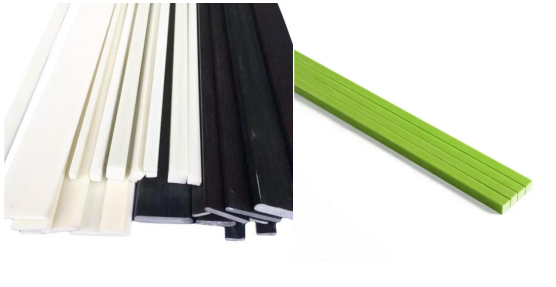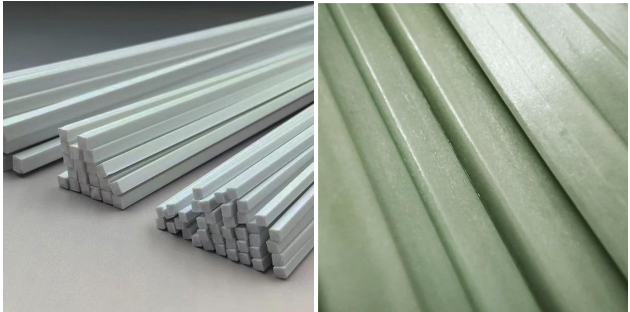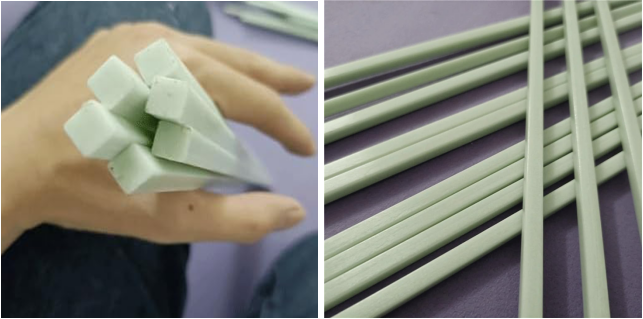The Future of Fiberglass Flat Bars in Renewable Energy and Green Tech
Introduction
The global push toward sustainability and renewable energy has led to a surge in demand for advanced materials that offer durability, corrosion resistance, and environmental benefits. Among these materials, fiberglass flat bars have emerged as a key component in renewable energy infrastructure, green construction, and eco-friendly industrial applications.

As industries shift away from traditional metals like steel and aluminum due to their high carbon footprint and susceptibility to corrosion, fiberglass-reinforced polymer (FRP) flat bars provide a lightweight, non-conductive, and long-lasting alternative. This article explores how fiberglass flat bars are shaping the future of renewable energy and green technology, their benefits over conventional materials, and the innovative applications driving their adoption.
Why Fiberglass Flat Bars Are Ideal for Renewable Energy Projects
1. Corrosion Resistance for Harsh Environments
Renewable energy systems—such as solar farms, wind turbines, and hydropower plants—are often exposed to extreme weather, saltwater, and chemical exposure. Unlike steel, which rusts over time, fiberglass flat bars are immune to corrosion, making them perfect for:
·Offshore wind turbine supports
·Solar panel mounting structures
·Tidal and wave energy installations

2. Lightweight Yet Strong
Fiberglass flat bars weigh up to 75% less than steel while maintaining high tensile strength. This reduces transportation costs and makes installation easier, particularly in remote energy projects.
3. Non-Conductive and Safe for Electrical Applications
Since fiberglass is an excellent electrical insulator, it is widely used in:
·Solar panel framing (prevents electrical leakage)
·Wind turbine nacelles (reduces lightning strike risks)
·Battery storage enclosures (enhances safety)
4. Low Maintenance and Long Lifespan
Unlike metal, fiberglass does not require painting, galvanizing, or frequent replacements. This cuts long-term maintenance costs—a crucial factor for large-scale renewable energy installations.
Innovative Uses of Fiberglass Flat Bars in Green Technology
1. Solar Energy Infrastructure
Fiberglass flat bars are increasingly used in:
Solar panel racking systems (resistant to UV degradation)
Ground-mounted solar arrays (withstands soil and moisture exposure)
Floating solar farms (does not corrode in water)
2. Wind Energy Components
Blade reinforcement (improves durability without adding weight)
Tower access platforms (non-slip and corrosion-free)
Nacelle structural supports (handles high stress without fatigue)
3. Energy Storage and Smart Grids
As battery storage systems expand, fiberglass flat bars are used in:
Battery enclosures (fire-resistant and non-conductive)
Power substation structures (reduces electrical hazards)
4. Sustainable Construction and Green Buildings
Beyond energy, fiberglass flat bars contribute to LEED-certified buildings through:
Thermal insulation (reduces energy loss)
Non-corrosive structural supports (longevity in humid climates)
Lightweight framing (lowers carbon footprint in construction)

Challenges and Future Developments
While fiberglass flat bars offer numerous advantages, some challenges remain:
Higher upfront cost compared to steel (though lifecycle costs are lower)
Recycling limitations (though new eco-friendly resins are being developed)
Future Trends:
Bio-Based Resins – Researchers are developing plant-based resins to make fiberglass even more sustainable.
3D-Printed Fiberglass Components – Additive manufacturing could revolutionize custom energy structures.
Hybrid Composites – Combining fiberglass with carbon fiber for ultra-high-strength applications.
Conclusion
Fiberglass flat bars are playing a pivotal role in the renewable energy revolution, offering unmatched durability, safety, and sustainability. As green technology advances, their applications will expand further—from next-gen solar farms to offshore wind projects and smart energy grids.
For industries looking to reduce environmental impact while maintaining structural integrity, fiberglass flat bars are not just an alternative—they are the material of the future.

